I have been in Brussels since 1996. At every election, I’ve heard that the progressive centre and centre-left would collapse.
Let’s see if that happened.
- The division between the progressive centre, centre left, and the centre right and right looks more or less the same today as it looked in 1979.
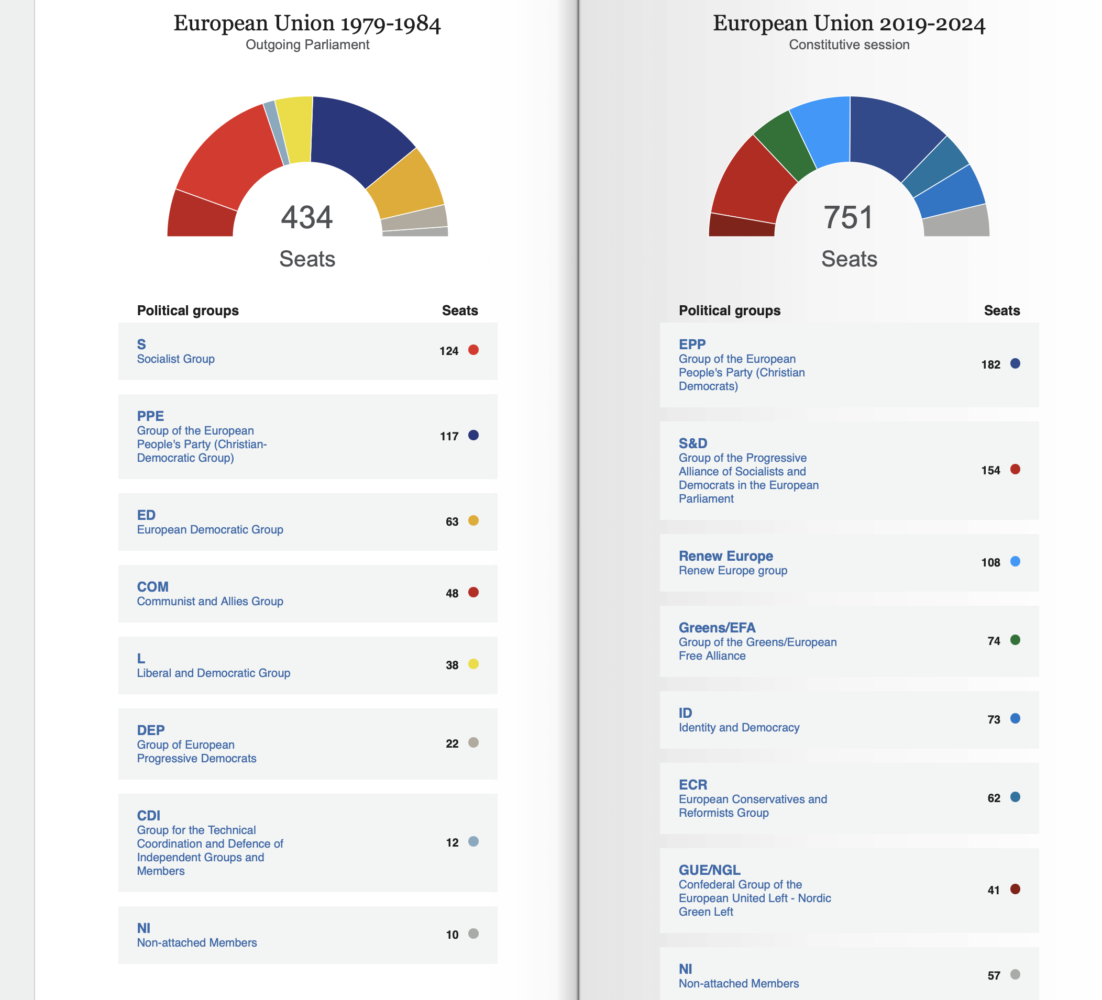
2. The percentage of seats taken by the Social Democrats and EPP declined over time from 28% S&D, 27% EPP in 1979 to 20% and 24% in 2019.
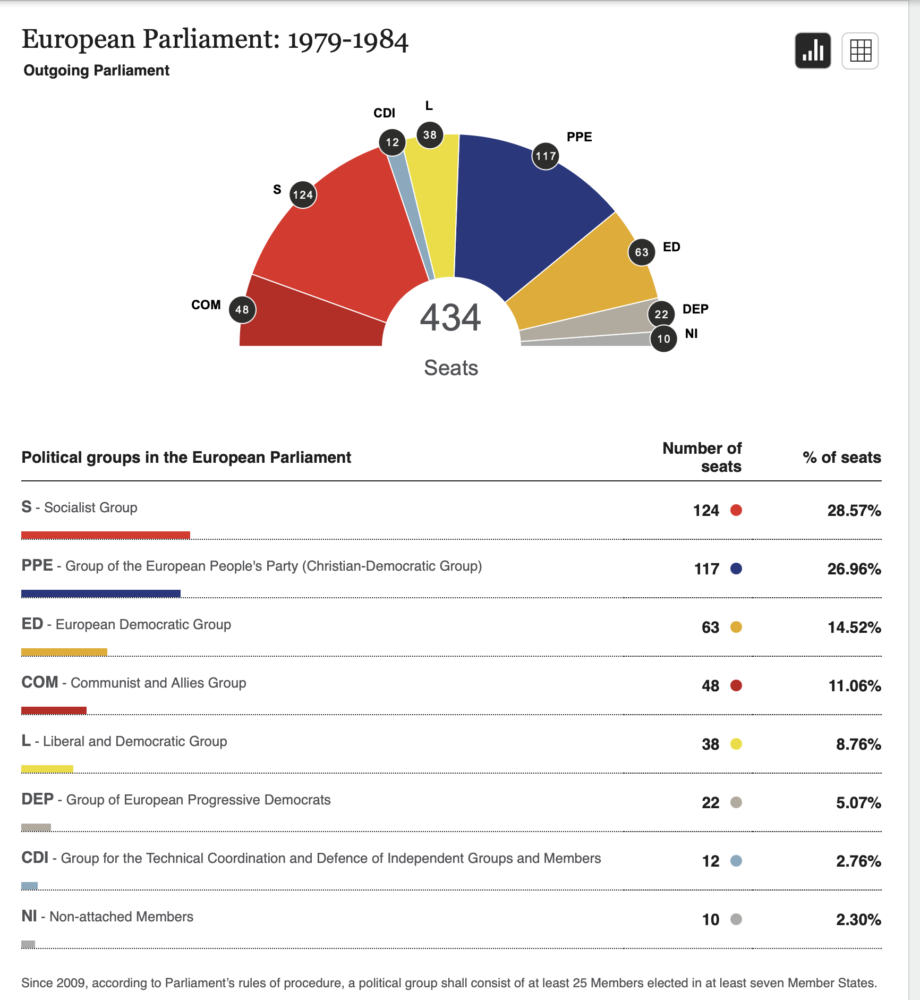
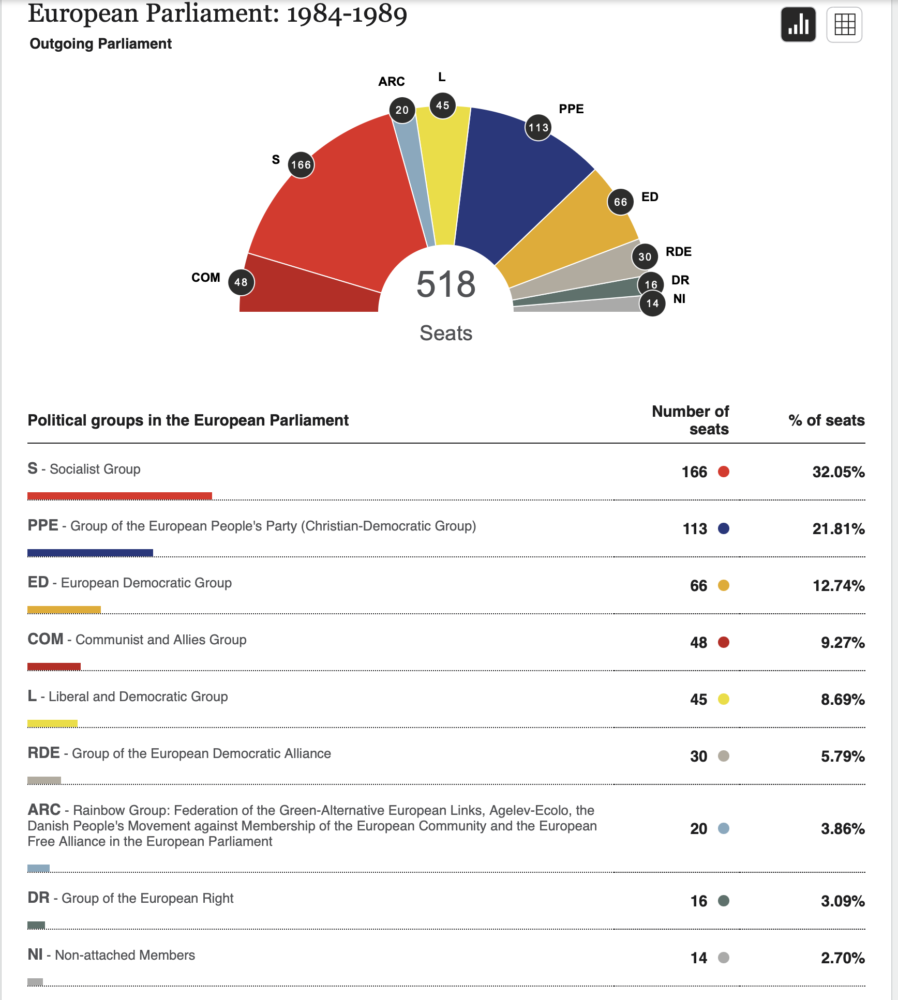
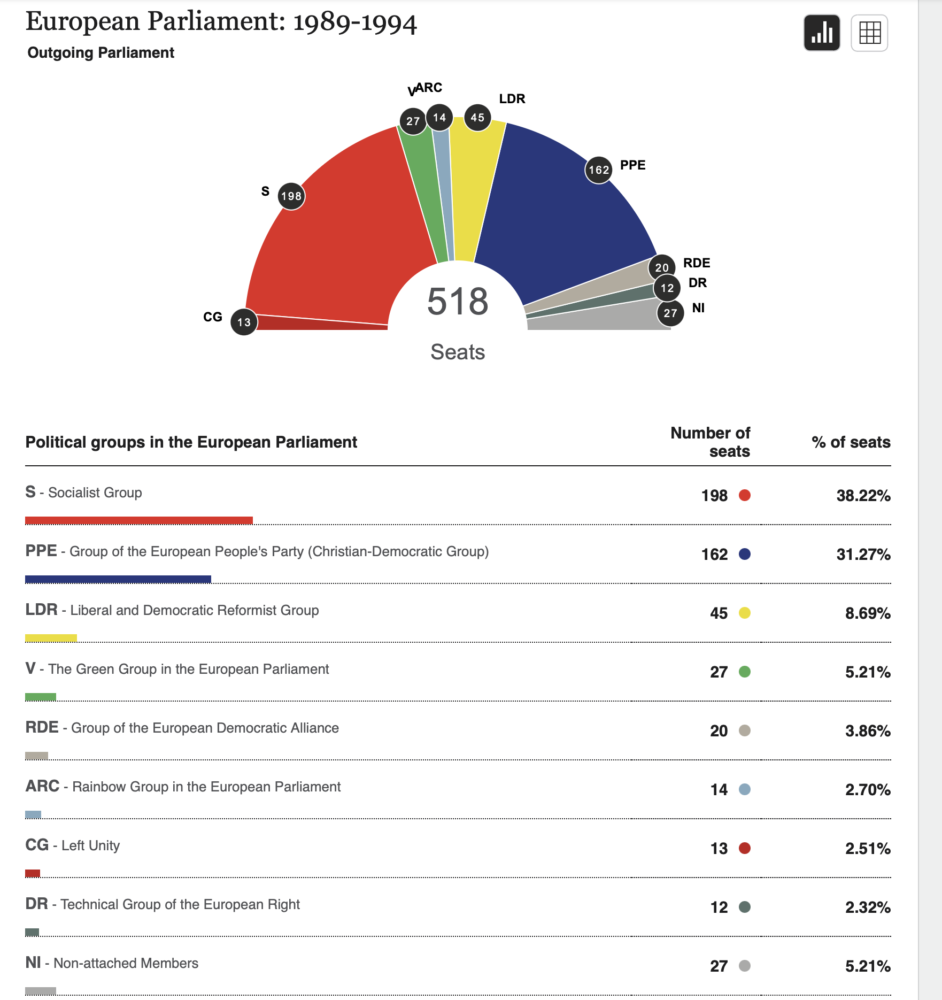
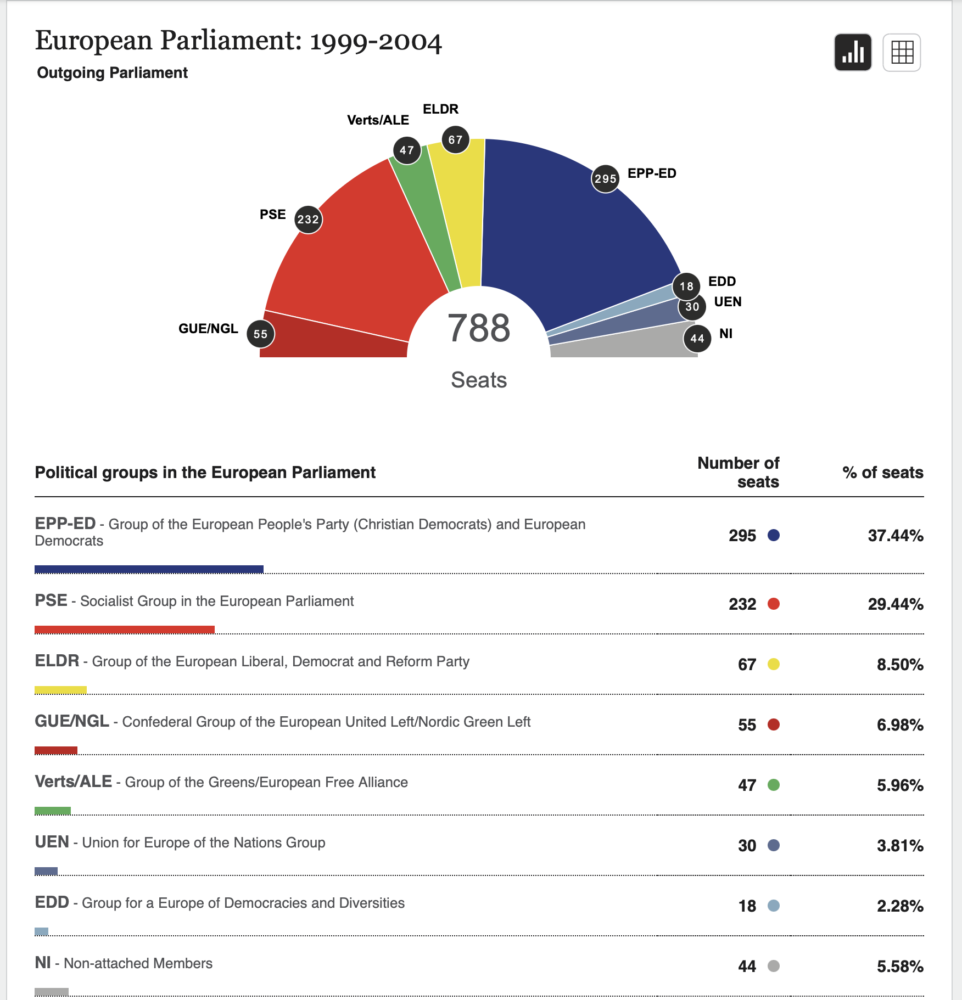
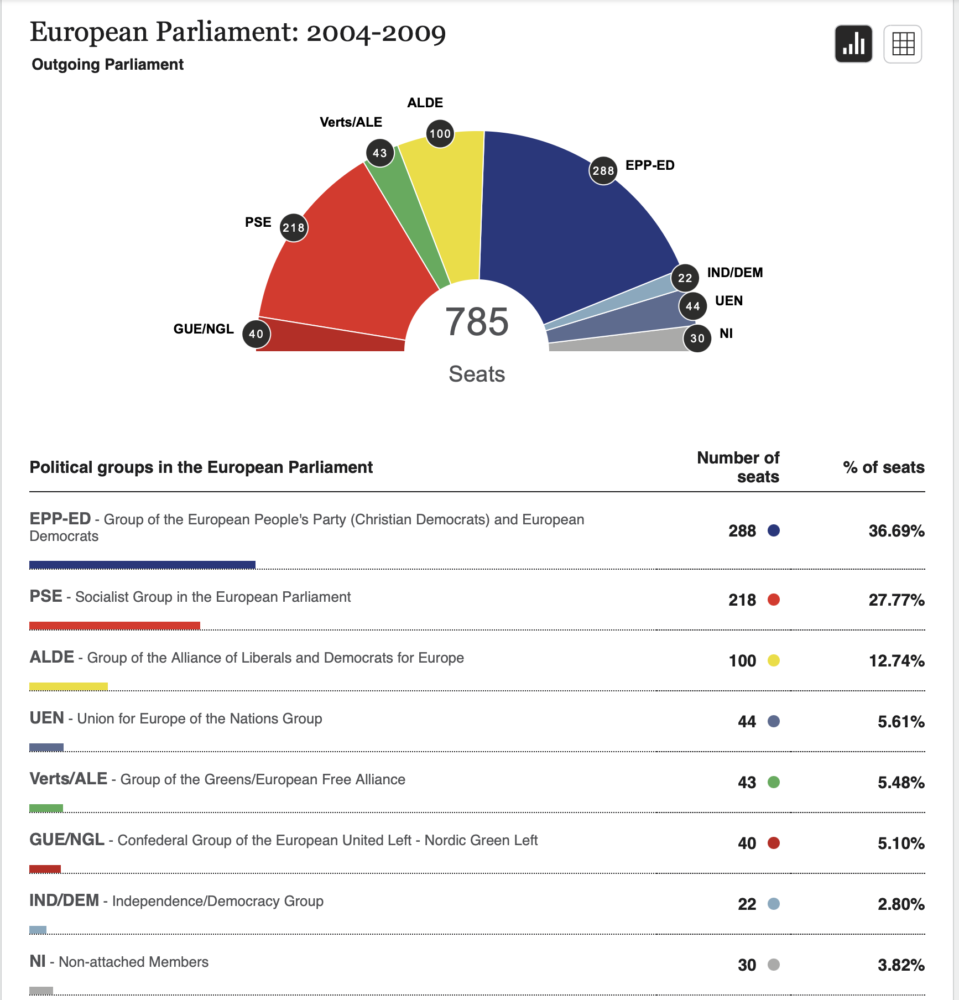

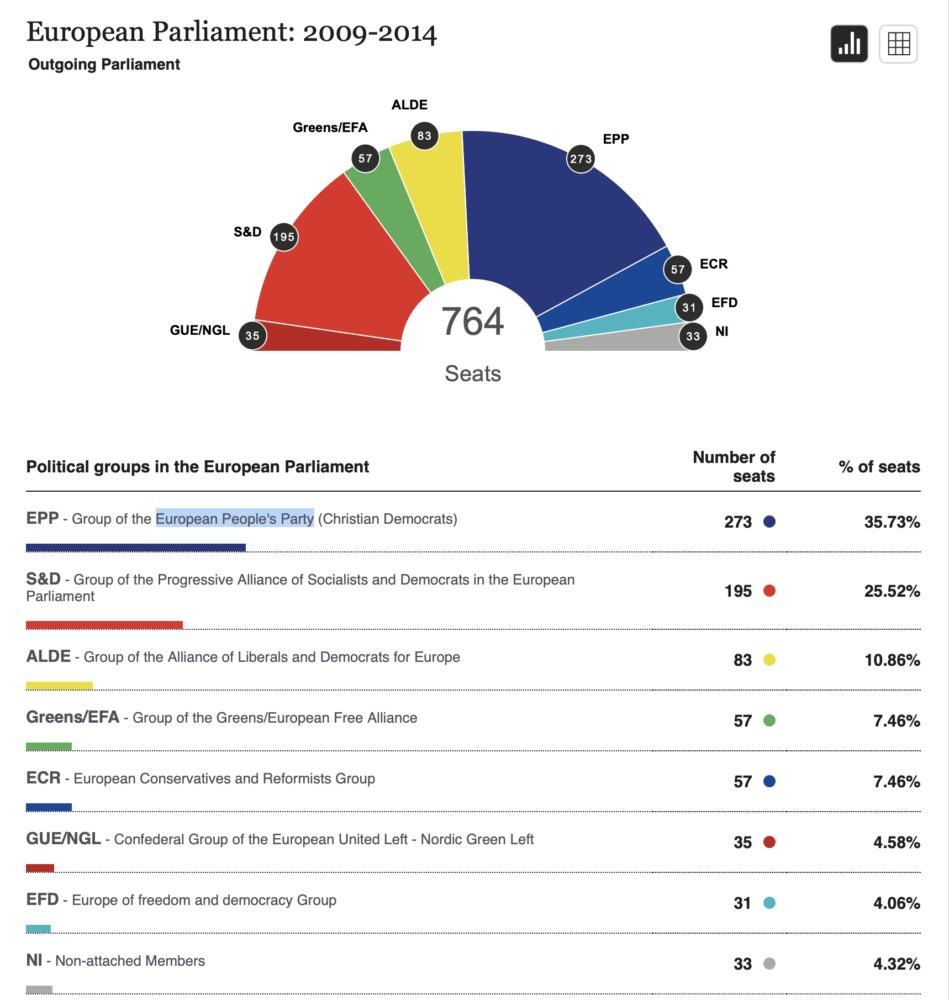
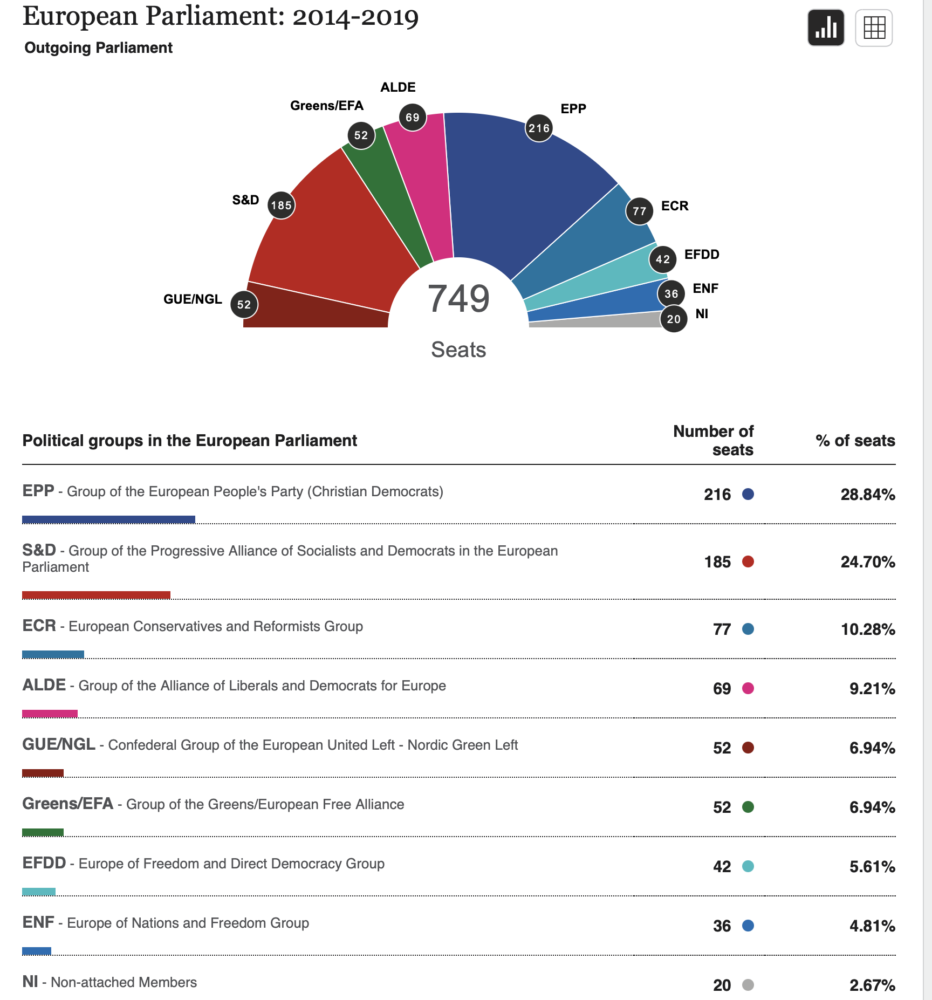
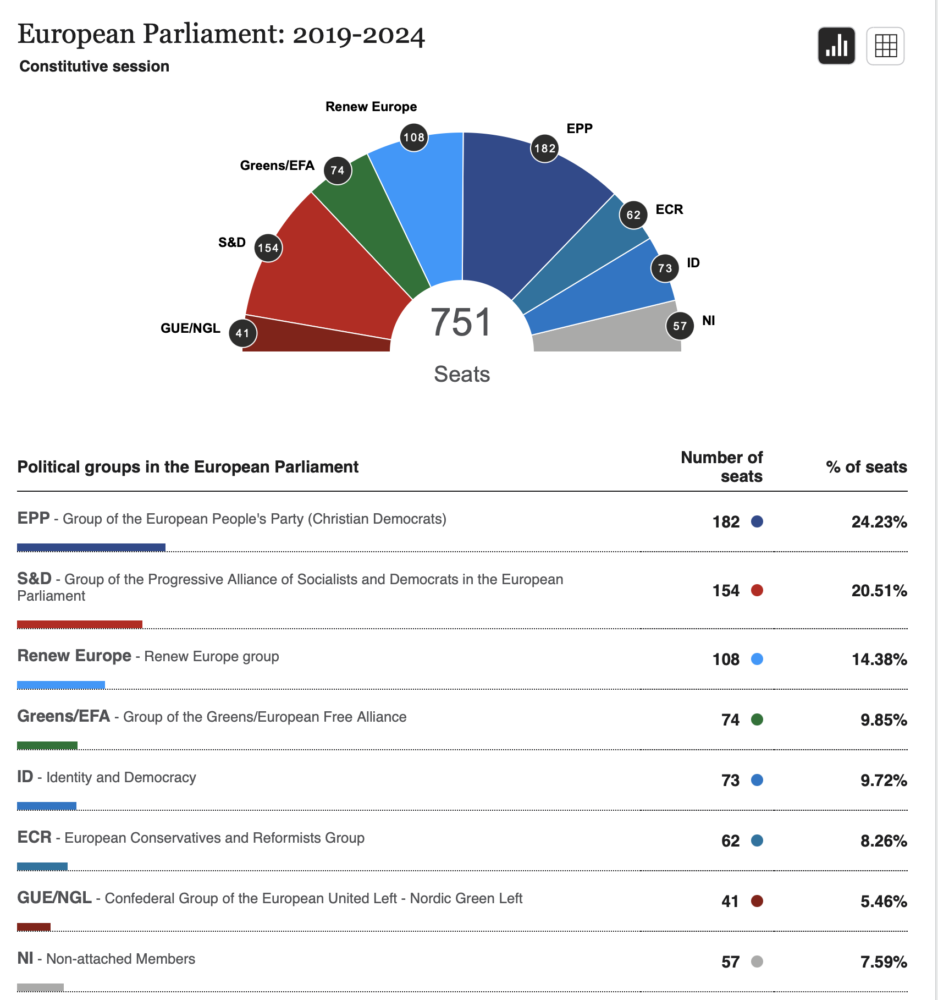
3. Other political groups have gone up and down from 1979 to 2019. The liberal group went from 8% to 14%. The Communists have declined from 10% of seats to 5%. What was the ECR in 1979 took 14% of seats and in 2009 took 8%.
4. I believe every European Election has been a national election run on national issues, with the backdrop of the EU. The Federalist fantasy Spitzenkandidat project seemed only to garner interest in Luxembourg and Germany. It gives Euro-obsessives the time to shine. Most MEPs discover their constituents have little to no idea about what they do.
5. The real question is how political groups work together to deliver majorities. And, given the broad political coalitions that are many political groups, how do those political groups follow the Party voting line. Renew appears split down the line on many issues, and EPP voting loyalty is fractious. The centre-left and left voting line is strong.